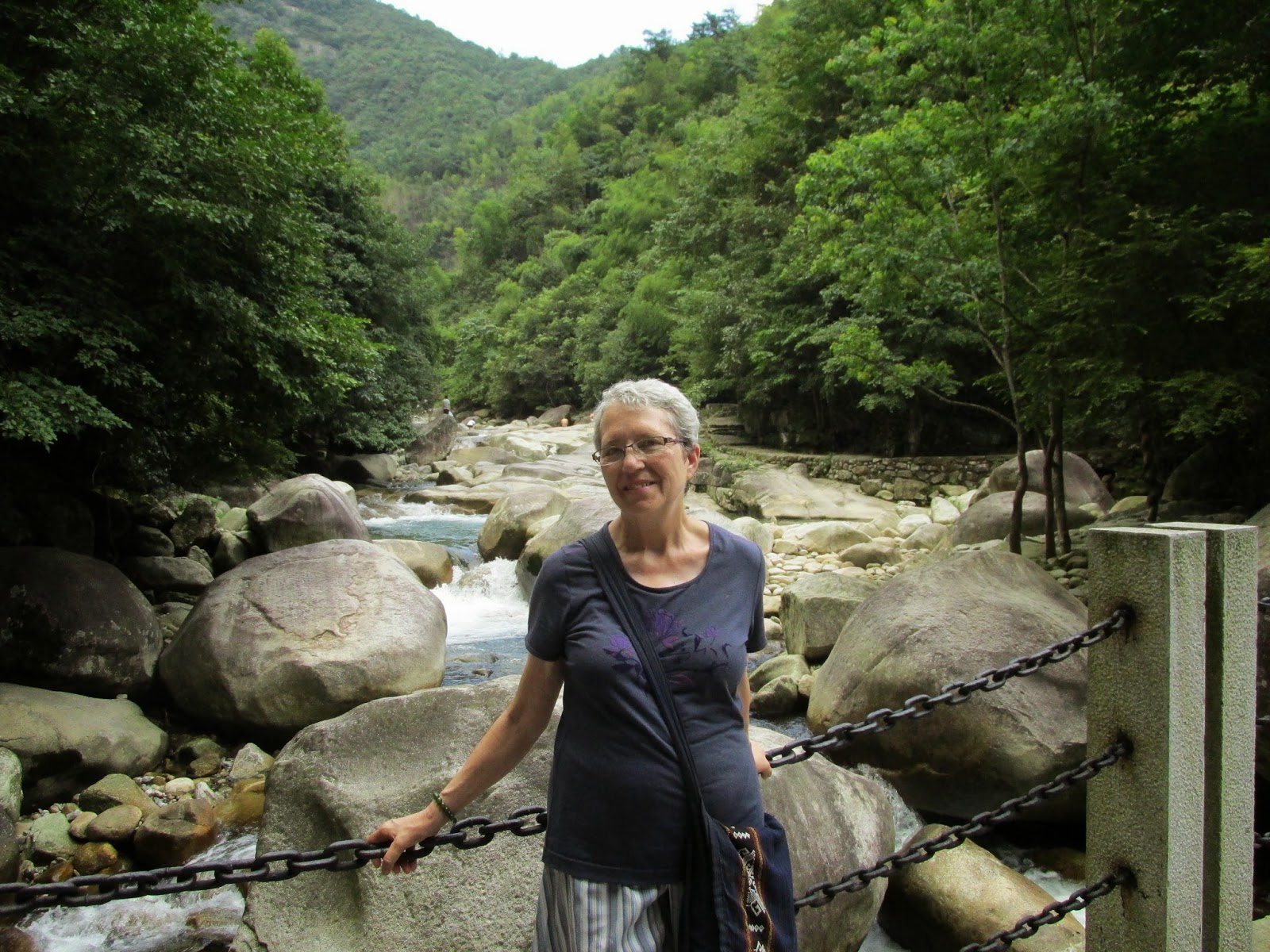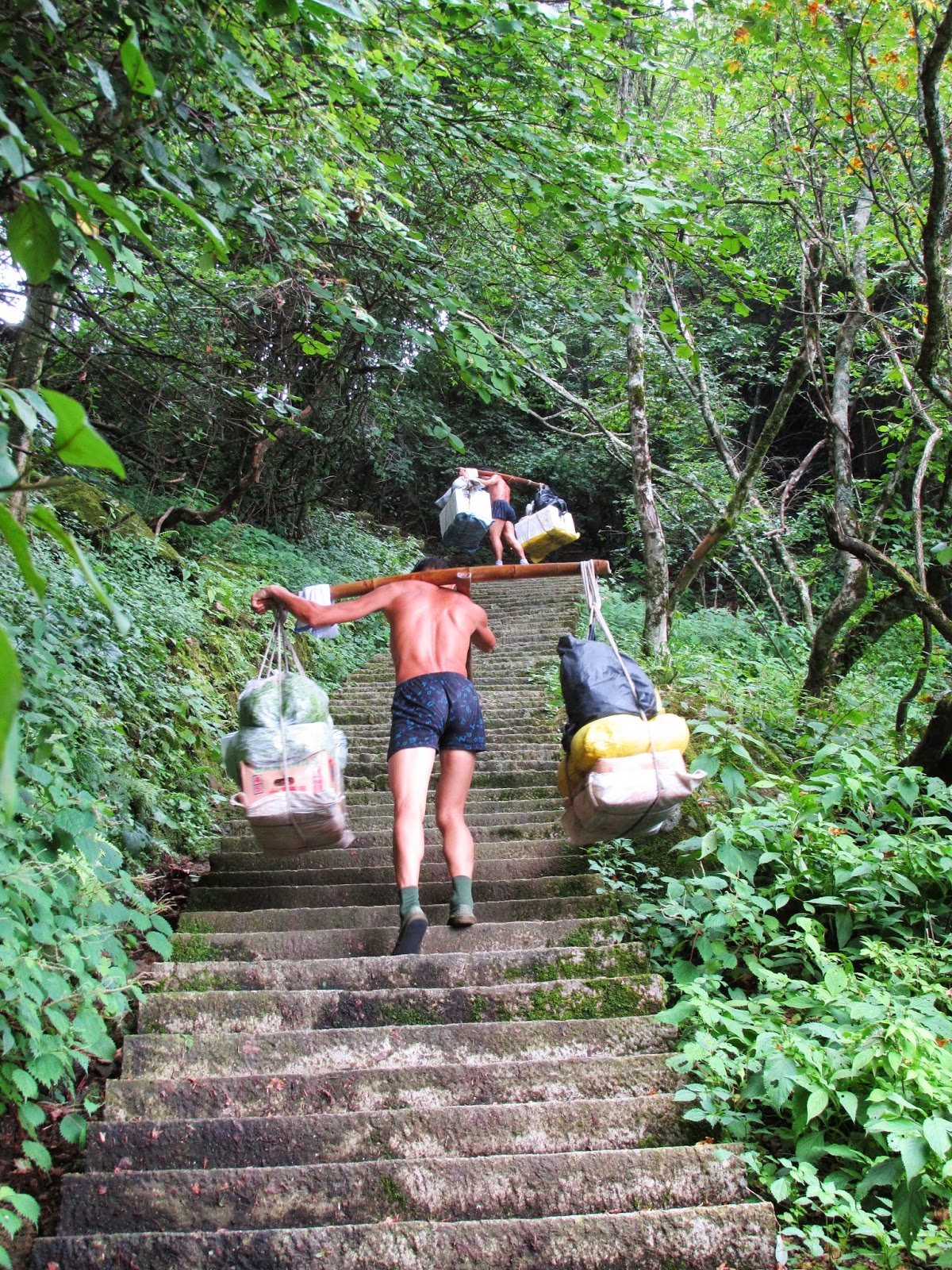 Saturday
I stayed in Little Likeng. The weekend tour groups were out, which was not
surprising. There weren’t too many groups; so it was easy to avoid them or wait
until they moved on. I enjoyed walking slowly through the village, looking at
the various items for sale and picking up a few small items for gifts.
Saturday
I stayed in Little Likeng. The weekend tour groups were out, which was not
surprising. There weren’t too many groups; so it was easy to avoid them or wait
until they moved on. I enjoyed walking slowly through the village, looking at
the various items for sale and picking up a few small items for gifts.
I also
walked out on the road along the fields for a short time. I do enjoy fields.
They are small, family-sized plots that have several vegetables in each plot.
And rice. After relaxing in my room for a while, I went to a teahouse on a
covered rooftop and enjoyed tea and reading for a couple hours.
Sunday
I took a private tour to Huang Ling and the Conxi River. Huang Ling is one of
the places photos of which enticed me to visit this area. It’s known for its
terraced rice fields and earth art, the various configurations of the fields.
It is also known for its ocean of flowers during all four seasons. They plant
flowers between and around the rice fields, perhaps as a tourist draw.
Different flowers for each season so something is always in bloom. This season's flowers were dark pink.
The trail
along the ridge to view the terraces is also lined with flowers in some places. I loved walking around the area and
viewing the configurations of the fields.
At the end of the paved trail, a man
pointed me to go ahead; so I walked on farther along the farmers’ path,
reminding me of walking on such paths in Sapa, Vietnam. After several minutes I
came to another field of flowers of a different kind. These were purple. A few
people were working among the flowers. And a few farmers were working in the
rice.
The
next place to walk was the corridor of 24 solar terms. I had no idea what that
meant, but I was curious enough to walk it. After passing the second set of six
stone pictures about farming with Chinese explanations, I figured out that
there would be 24 pictures. Later I remembered reading that people met in the village
pavilion on the 1st and 15th of each month, which would
make 24 times a year. So the 24 solar terms related to the farming cycle
through the months.
The
path goes through a wooded area that has ancient yews. These are labeled the
“panda of plants” because they have been on earth for over two million years
and are now endangered.
The
final place to visit is Huang Ling village, an ancient village that is famous
for its folk culture: drying seasonal produce on huge bamboo trays. Bamboo
poles jut out from the roofs to hold the trays. After seeing a poster of thIs, I was thrilled to be
experiencing it in person.
On the way out there was a sign on a building that
I almost missed inviting people to go to the third floor to take photos. This
was the view that was on the publicity poster, and I had it to myself.
Houses
in the village are stucco with elaborately carved wooden doors, windows, and
decorations. The village is in the process of being upgraded. Many of the
houses are gutted and are being renovated. New construction is going up outside
the ancient village. It will become more touristic.
We
stopped at a local restaurant for lunch where I was able to point to the food I
wanted to have cooked. I chose fish, thinking I was ordering one fish, and
bamboo. Of course, I got more than one fish and couldn’t eat them all.
After lunch
it was time for river drifting on the Conxi River. I envisioned myself floating
down the river on a bamboo raft. But that’s not what happened. Because I am
only one person, I had to either pay 120 RMB/$20 more or wait for several other
people to arrive. After a few minutes, Vivian approached and introduced
herself, speaking fluent English, and asked if she could help. I explained why
I was waiting and sat with her and chatted. She was there with her colleagues,
as they were having a weekend outing together. When everyone had arrived, they
invited me join them on rubber rafts. (Vivian said she, too, preferred a bamboo
raft but the group preferred the rubber ones.) Four of us were in the raft and
we each had an oar. So, instead of relaxing while a man poled the bamboo raft,
we were rowing ourselves down the river. It was fun. People on a couple of the
rafts were into water fighting. My companions tried to avoid this, but we got
wet anyway. Mostly we quietly rowed, sometimes drifting along, for an hour. The
river itself isn’t very special, but it was a fun activity and it was nice to
do it with these people.





























































